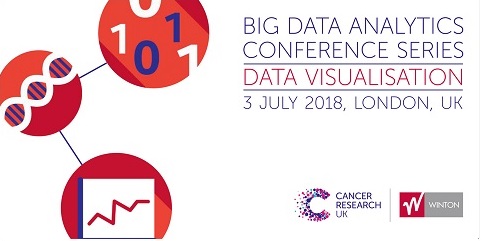Attending the Big Data Analytics Conference

By Simon Whalley
CORECT-R Data Manager
Telling a story to influence decision and policy makers is a great skill no matter what discipline you are in. Some people have a natural ability to engage an audience no matter what they talk about and this was the case with the speakers at the Big Data Analytics Conference: Data Visualisation held in London on 3rd July.
The whole premise of this conference was about methods and best practice in data visualisation to bring out the key themes or patterns within data to best engage the audience and influence their decision making process. Speakers such as Emma Cosh and Alan Smith spoke with great knowledge and passion on this topic with broad methodologies to follow and best practice to use from their own experiences.
Emma spoke about some great analysis that she had carried out and was really pleased with which had little impact to the people she was working for until she started producing engaging visualisations of these data that made them engage with the results of her analysis. Good data visualisation makes things happen. She pointed to the key areas of:
- Make the data visualisation important to them
- Get a connection
- Listen to what they want
- Ask good questions to understand the key points they want to get out of these data
Building the visualisation itself was in reality only a small part of the process. Good design and building a strong relationship with the client were far more important.
Alan followed a similar theme talking about taking data and visualising it in a form to stimulate the public debate. From his work at the Financial Times they had produced a set of guidelines on data visualisation called the Visual Vocabulary.
Talks were also given on new techniques for displaying very complex data in an understandable form. Nils Gehlenborg spoke about developing visualisation software to look at the genetics of patients with cancer through their software called StratomeX.
As well as allowing data investigation and visualisation it also recorded the path of data analysis carried out by the user so that this could be replicated or documented at a later date for publication. He called this a Vistory. This allowed for a data discovery method to be adopted, but also gave the potential for other users to replicate researchers work for peer review which is currently very hard to do.
Iain Foulkes from Cancer Research UK, one of the conference sponsors, said that within cancer research there was a vast amount of data available for analysis, but less experience in handling these data in an appropriate form and this conference series had been set up to address this. The aim had been to produce better analysis and visualisation of results so that these types of analyses would have a greater impact. He concluded that this conference had been a great success in addressing the area of data visualisation.
As well as engaging the audience on the day, I found that I learnt a lot of useful techniques and guidelines to follow for any future work that I will carry out.
